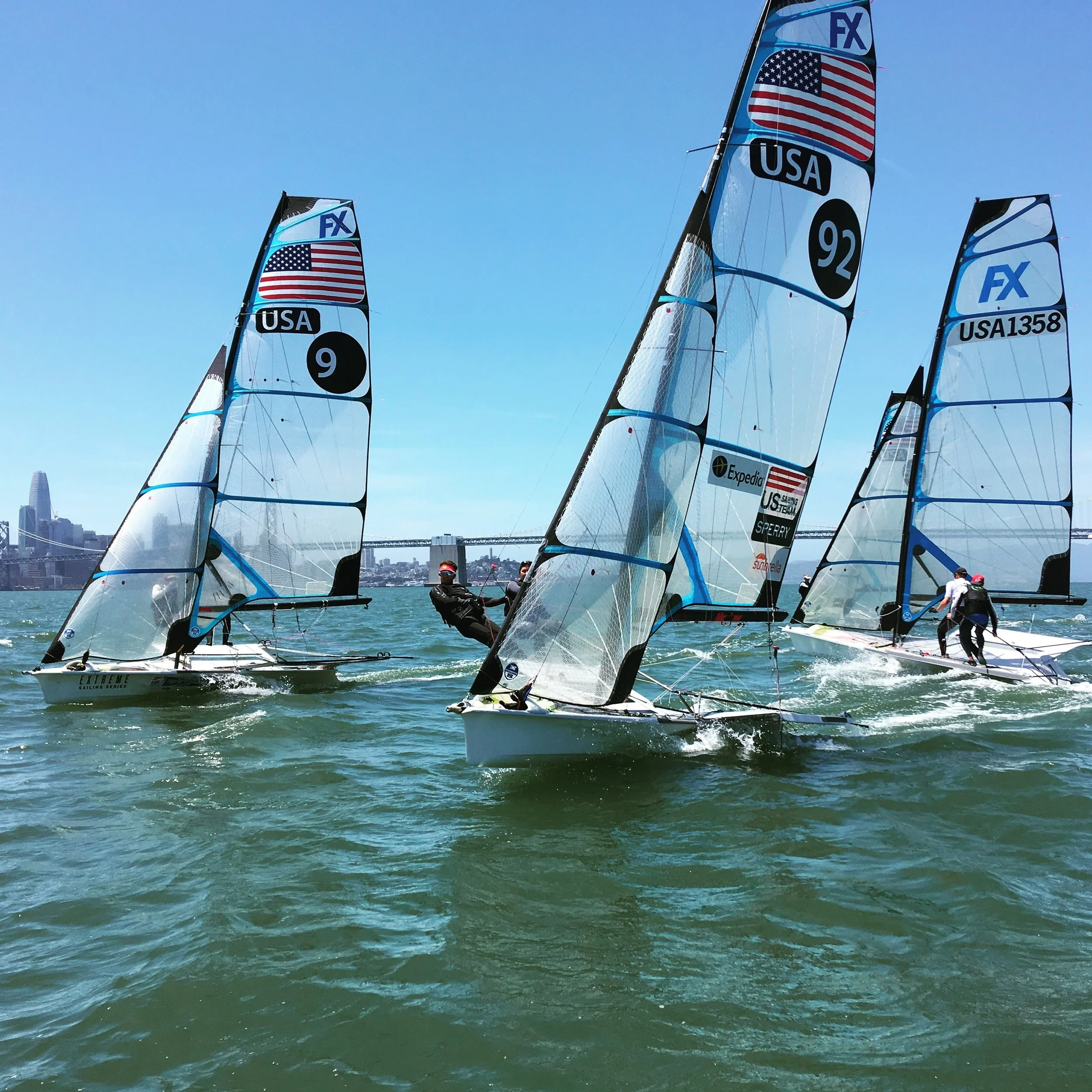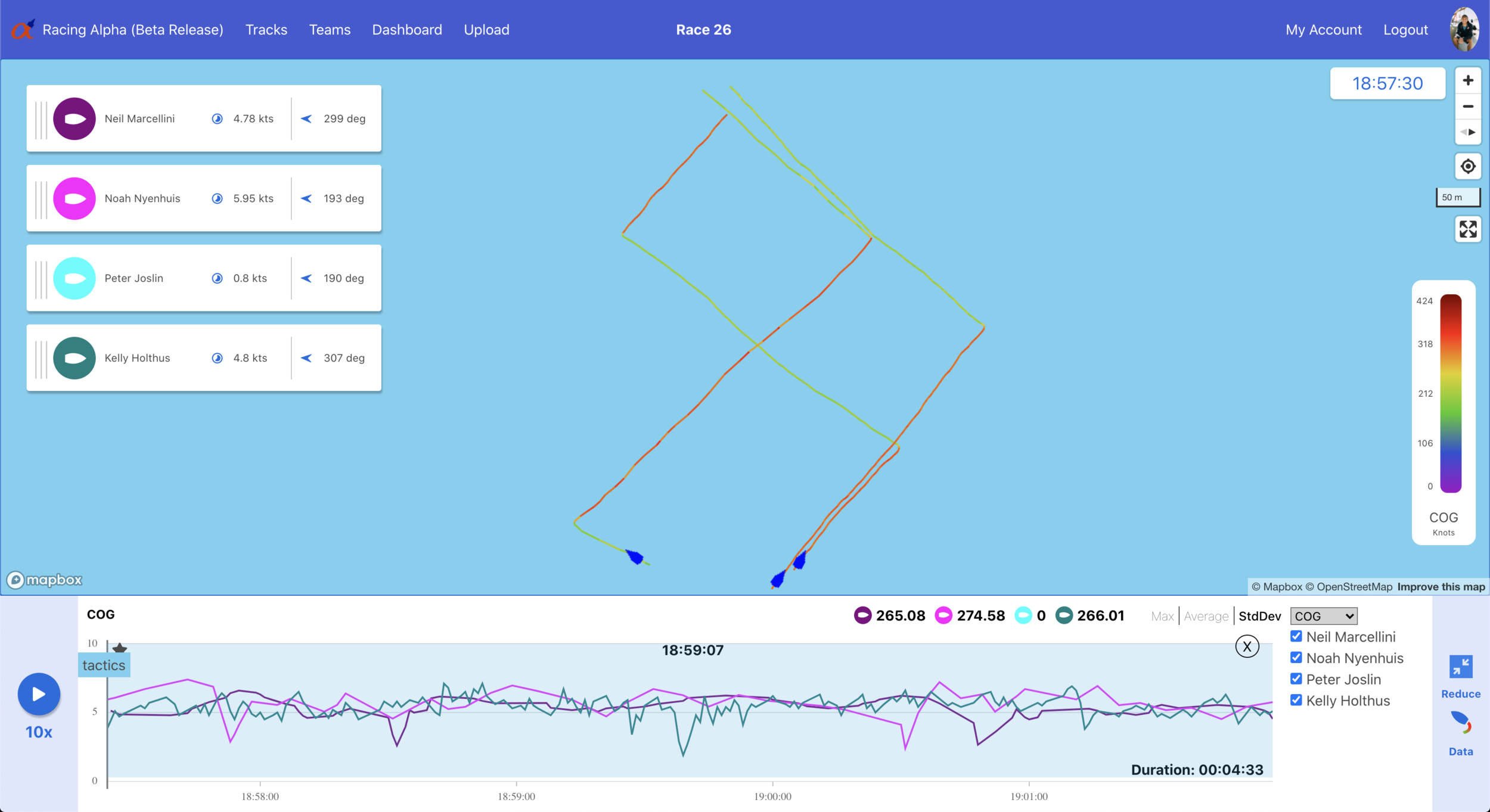Quick! - dig out your local knowledge notes for Kiel. Now find your tuning numbers from last year in Miami. How about the takeaways from the last time you worked on starting in 20 knots?
The problem with good notes, is that they're hard to keep organized, so remembering what you learned a year ago, or even a month ago can be difficult, and often times notebooks turn into black holes for gold nuggets.
For coaches, there's a bigger problem, which is that we don't know what's going into those notebooks, so we're not sure what's actually getting through to our athletes.
There is no question of the value of note taking in improving information retention (just ask Hamish Wilcox, coach of Olympic Gold Medalists Pete Burling and Blair Tuke), but our systems for note taking are out dated. Racing Alpha provides four features to bring your note taking game into the 21st century, and accelerate your learning curve.
Basic Best Practices
The number one piece of advice that we can give is that wether you’re taking notes in Racing Alpha or elsewhere, you should record your thoughts daily, as soon as you get off the water so that it’s fresh in your mind!
We recommend the following workflow:
Hit the dock, boat on dolly, sails down, start syncing your watch with your phone.
By the time the boat is de-rigged, and you’re back in dry clothes, your track will be waiting for you in Racing Alpha.
Click on the track journal, and start taking notes!
If you forgot to track that day, you can always visit the dashboard and create a journal entry, there as well.
Keep in mind that the best notes are short thoughts that use positive reinforcement when possible; instead of writing what went wrong, focus on what the solution is that you’re shooting for!
Here are the four tools that we think can make your notes even more effective.
1. Collaboration Tools
Instead of a black hole, your notes should be something that sparks discussion with teammates and coaches. In Racing Alpha, any journal entries that you make on Public tracks will be visible to any teammates and coaches in your Teams, while notes on Private tracks will be visible only to you.
On your Dashboard, you can check out journal entries made by teammates, and reply to them to share your thoughts. In addition, your coaches will be notified every time you make a journal entry, which can be a great tool for them to figure out what information you’re retaining, and what you might need to go over again.
2. Video and Photo Attachments
As a sailor, if you like taking notes by hand - go for it! Write in your notebook, snap a photo on your phone and upload that photo to your track journal for the day, maybe with a few typed, searchable keywords incase you want to search for the photo later.
As a coach, this is a great way to share your video and photos with athletes at the end of the day. Photos can be directly uploaded to the track journal, so that you can share leach profile shots, or key still frames from the day. Keep in mind that if you’re uploading from an iPhone photo, the images are often stored as HEIC format which isn’t currently supported, but you can convert to a JPEG, super easily by taking a screenshot of the photo before uploading.
For video sharing, you can share your videos or any public videos, simply by posting the link to a youtube video in a comment. Racing Alpha will automatically identify that you’ve posted a Youtube link, and display the embedded video for the sailors.
3. Gold Star Track Segments
Have a big tactical moment on the race course? File away those moments so that you don’t forget them! With your tracks, the Gold Star tool allows you to save portions of your day to your journal, so that you can recall those scenarios later. Try staring a section of track, and discussing it with a teammate or coach to analyze why it worked, or what could have been done differently.
4. Tags, #Hashtags and The Search Bar
Finally, the goal of the journal is to be a tool that you come back to over and over again. Next time the forecast calls for a windy day, you should be able to search back through your tracks to recall the fast settings you used last time you sailed in those conditions. The search bar currently allows you to search for terms, and tags, so when you file your notes, check the appropriate boxes (“Local Knowledge”, “Speed” or “Boat Handling”) or create your own searchable tags with the #hashtag.
One trick here is to keep thoughts separate in journal entries. For example, split:
“We sailed with a lot of downhaul and felt really fast. The right side paid because of pressure. #BoatSpeed #LocalKnowledge”
Into:
“We sailed with a lot of downhaul and felt really fast. #BoatSpeed #17knots”
“The right side paid because of pressure. #LocalKnowledge”
In the future we plan to build out the search bar to search for wind speeds, wind directions, venues, and more.































